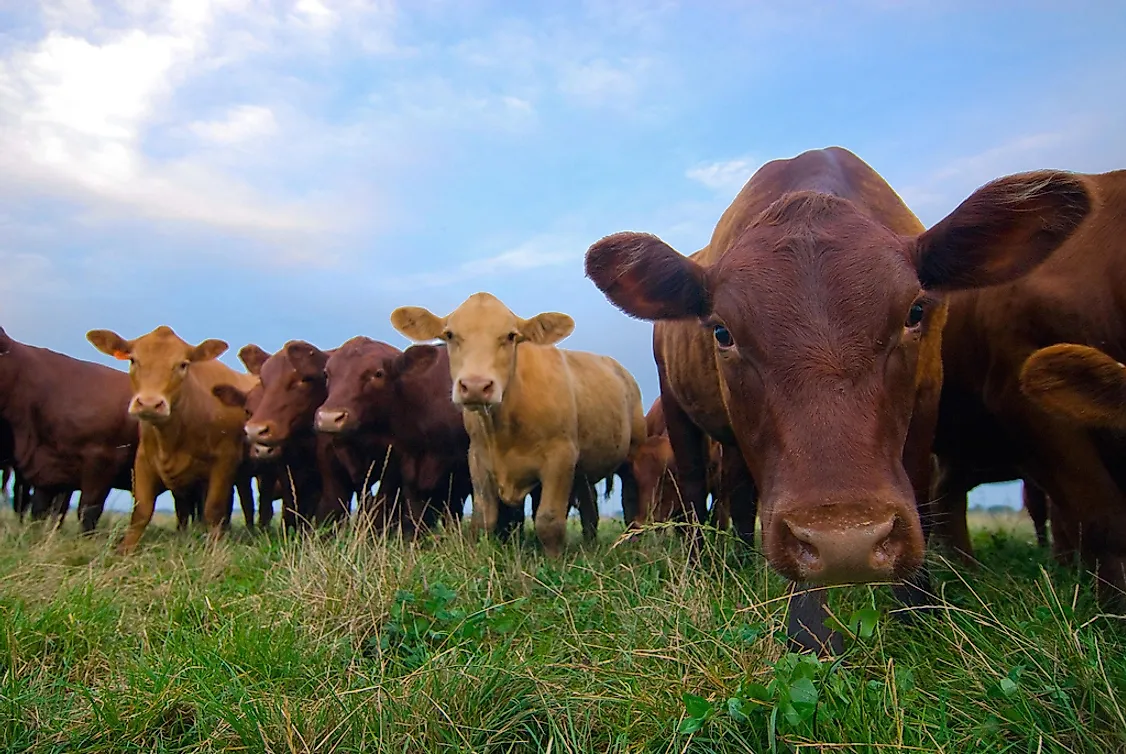Top Meat Consuming Countries In The World

Meat consumption is the inclusion of meat products in the diet. Factors such as culture and religion impact decisions to consume meat. One of the biggest factors influencing meat consumption is economic status. Household income has a positive correlation to meat consumption. This fact explains why the list of the world’s highest meat consumers encompasses some of the most developed countries of the world. Also, culture affects the cuisine of the people and thus, countries like Israel also consume high quantities of meat. The availability of meat also influences people's buying power and in the South American nations, where the animal agriculture industry flourishes, meat consumption is high among their people.
Countries with Highest Meat Consumption
Australia consumes more meat per year than any other country in the world. Australians consume 205 pounds per person annually. They obtain their meat largely from Nippon Meat Packers Company, one of the top ten companies in the meat industry.The United States follows close behind at 200.6 pounds per year. The average chicken weighs 5 pounds which mean US residents are consuming the equivalent of 40 chickens every year. The large meat packing industries that service the US are Smithfield Foods, Cargill, Hormel, and Tyson. Residents of Israel report consuming 189.6 pounds of meat annually. The government here actually spends money to promote meat in the diet. As of 2014, they were planning a strategy to reduce the cost of meat as well. Argentina, one of the top beef producers, is also one of its largest consumers. As per 2013 reports, Argentines consume 186.7 pounds of meat per person over a year. Beef is a major component of many traditional dishes in this country. Uruguay is next on the list at 182.8 pounds of meat consumption annually. Surprisingly, Uruguayans eat more beef than Argentinians despite producing less cows and consuming less meat overall. Brazil, the second largest producer of beef worldwide, is number six on the list for consuming 172.2 pounds of meat annually. The largest meat industry plant in the world is in Brazil, JBS. The JBS company had a 38.7 billion dollar revenue in 2012. Number seven on the list is New Zealand. Its residents consume 162 pounds of meat per person per year. Nearly 25% of their meat consumption is sheep. Chile also relies on meat as a primary component of most of its dishes. Residents here consume 159.8 pounds of meat per year. This country imports the majority of its beef from Argentina. Canada comes in ninth place on the list of high meat-consuming countries. Meat consumption here has actually decreased over the last decade and, as of 2013, is at 155.4 pounds per person annually. Price increases and economic recession are responsible for this decrease. The last country on the list is Malaysia. Its residents eat around 121 pounds per person every year. While typically Pacific Asia regions are on the lower side of meat consumption, cultural differences allow for such varying behaviors. In the case of Malaysia, income does not positively correlate to eating meat. Although, the majority of the meat consumed is chicken, a lower-cost option. Malaysia imports meat from Australia.
Environmental Impacts of Meat Consumption
Not only is the over consumption of meat bad for health, but is is also bad for the health of the environment for various reasons. Livestock agriculture requires almost half of the earth’s total land. It leads to unsustainable water use; for example, 55% of water used in the US is for factory farming. Runoff contaminates waterways with nitrogen and phosphates. The greenhouse gasses produced by livestock agriculture make up at least half of all manmade emissions. Methane, an emission, has a global warming potential that is 86 times more than carbon dioxide. The evidence is clear that animal consumption is the leading cause of reduced biodiversity, water pollution, and deforestation which are all causes of global warming. The global demand for meat is leading to environmental destruction.
The Most Meat Consuming Countries Of The World
| Rank | Country | Annual Meat Consumption Per Capita (in lbs), 2013 |
|---|---|---|
| 1 | Australia | 205.00 |
| 2 | United States | 200.60 |
| 3 | Israel | 189.60 |
| 4 | Argentina | 186.70 |
| 5 | Uruguay | 182.80 |
| 6 | Brazil | 172.20 |
| 7 | New Zealand | 162.00 |
| 8 | Chile | 159.80 |
| 9 | Canada | 155.40 |
| 10 | Malaysia | 121.00 |
| 11 | South Africa | 111.80 |
| 12 | Saudi Arabia | 111.30 |
| 13 | Russia | 110.70 |
| 14 | South Korea | 110.70 |
| 15 | China | 107.60 |











